2023 marks the third consecutive year TACPLACI has installed nesting boxes around the Clarence Council area. Gathered outside Elinga Play Park in Howrah, committee member Ross Mackenzie watches on as the Tasmanian Tree Care crew installs boxes 14, 15 and 16.
Ross is a part of Tranmere and Clarence Plains Land and Coast Care Inc (TACPLACI), and more broadly the Landcare movement that makes up more than 5,400 local groups across Australia.
With a small but enthusiastic collection of members, the group carries out conservation activities every Thursday, primarily involving the planting and ongoing care of native trees. Most recently, the group was involved with creating the naniyilipata / Clarence Plains Historic Trail following the Clarence Plains Rivulet.
As a not-for-profit community organisation, the group utilises a Clarence Council community grant to fund their efforts. It’s with this funding that the group engages Tasmanian Tree Care to install nesting boxes and to provide ongoing monitoring of their success.
Why habitat hollows are important
Tasmania is home to a diverse range of wildlife, including many obligate nesting dependent species such as the Swift Parrot. These species rely on tree hollows for breeding and shelter, and their populations are under threat due to the loss of suitable habitat.
As arborists, we have an important role to play in preserving and enhancing habitat for these species through hollow creation and augmentation techniques.
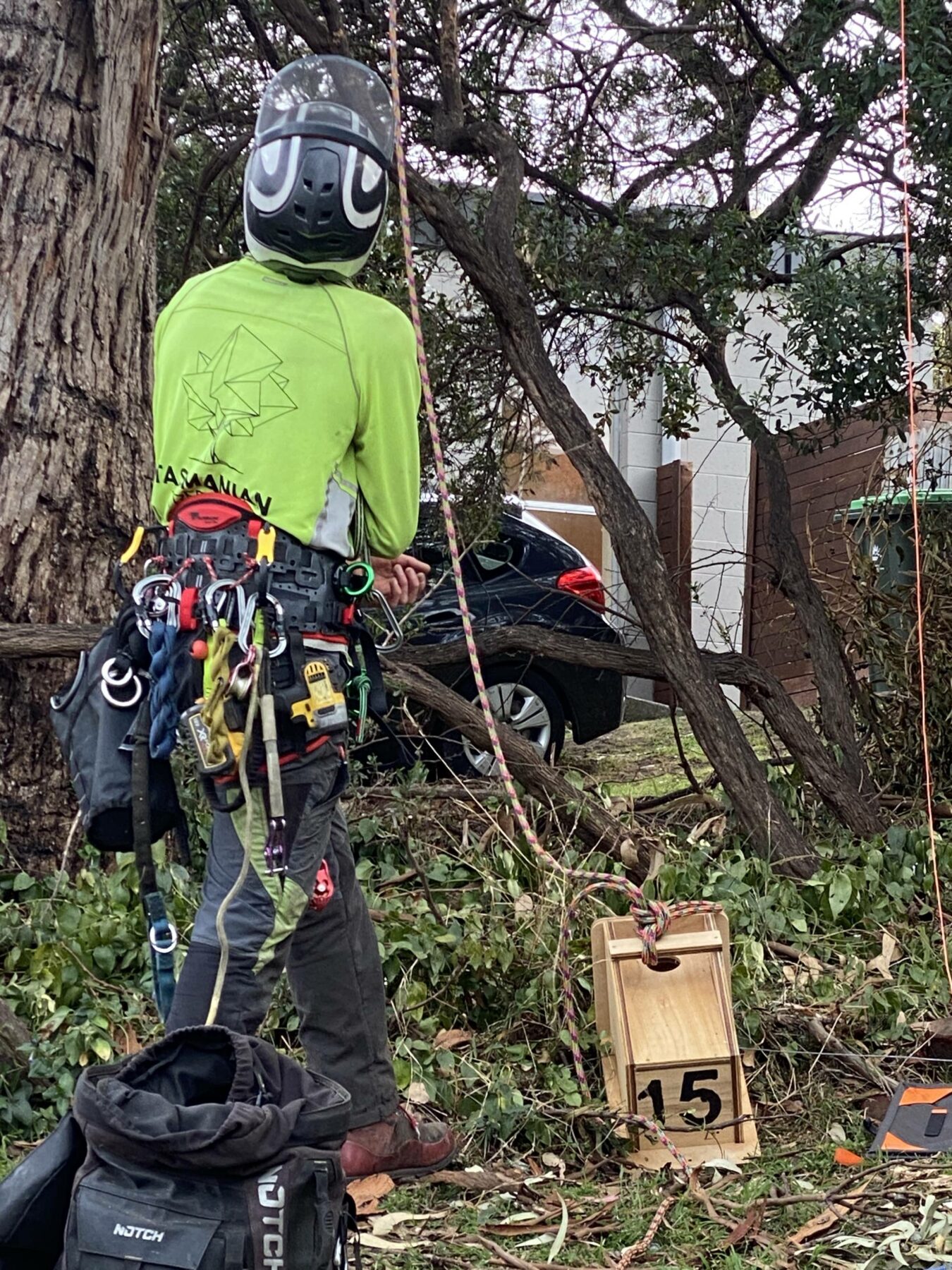
Tas Tree Care crew member Jack Colbeck preparing nesting box 15

TACPLACI Co-Convenor Ross Mackenzie
Different types of habitat hollows
Nesting Boxes
Nesting box installation is a method of providing artificial nesting sites for animals. Nesting boxes are typically made of wood or other durable materials and are designed to mimic natural nesting sites. They are often installed in trees or on poles in open areas, such as parks or gardens.
The boxes can be designed to attract specific species of birds, bats, or other animals, and can be placed at different heights and locations to suit the needs of the species. Nesting boxes can be an effective way to provide habitat for animals in areas where natural nesting sites are scarce or have been destroyed.
Chainsaw Carved Hollows
Chainsaw carved hollows refer to a method of creating artificial tree hollows using a chainsaw. This method is often used by arborists and wildlife conservationists as a way to provide habitat for hollow-dependent species.
The process involves cutting a cavity into a live or dead tree using a chainsaw, and shaping it to mimic a natural hollow. The size and shape of the cavity can be tailored to attract specific species of animals.
Chainsaw Carved Hollows for Ground Dwelling Vertebrates
These chainsaw-carved hollows mimic natural burrows, offering secure shelter for animals like wombats and devils. Size, shape, and location are vital, as entrances must allow for easy access, interiors provide security, and placement aligns with species’ preferences. Often, these hollows are installed to aid areas with scarce natural burrows.
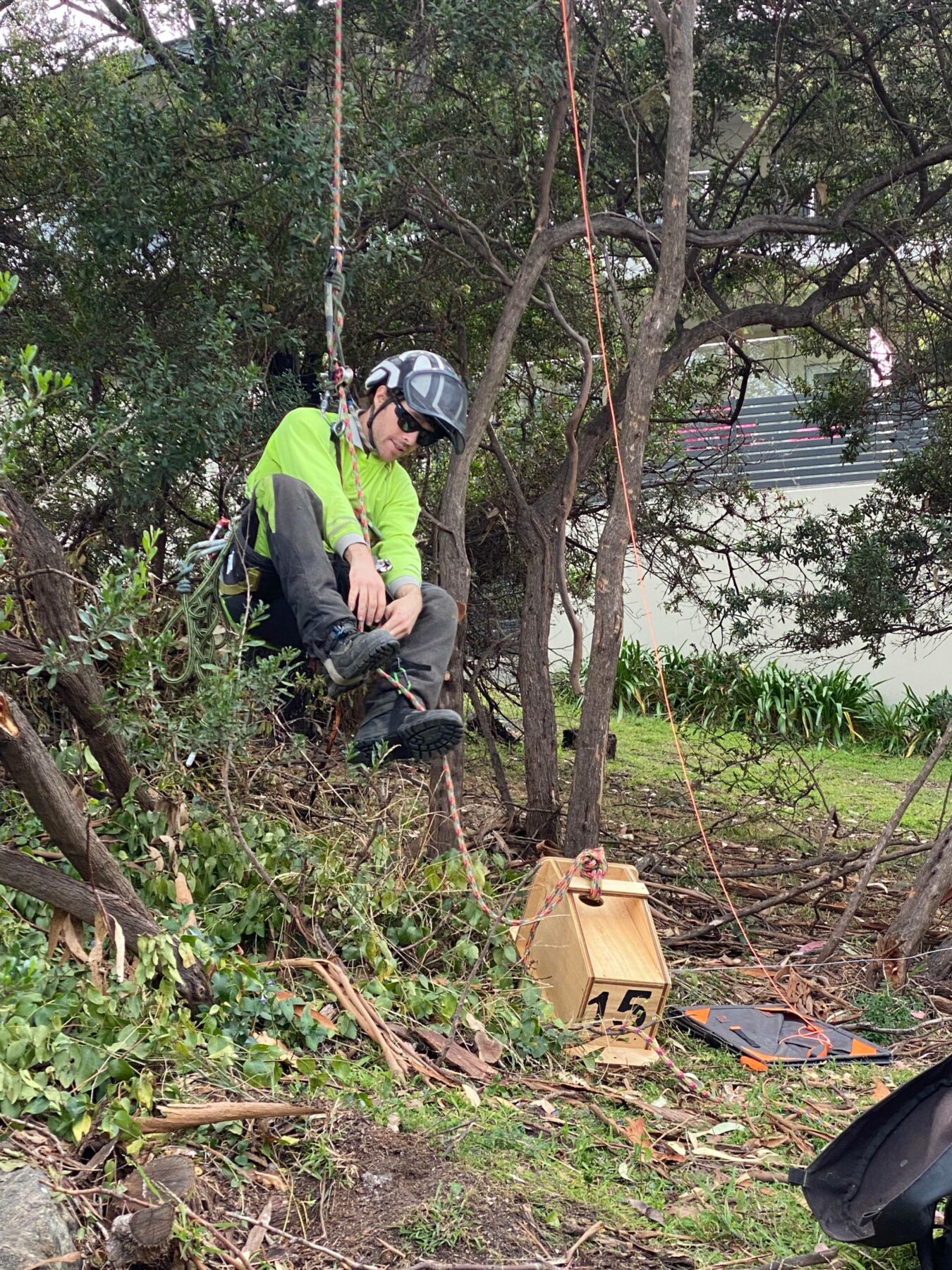
Tas Tree Care crew member Robert Scott installing nesting box 15
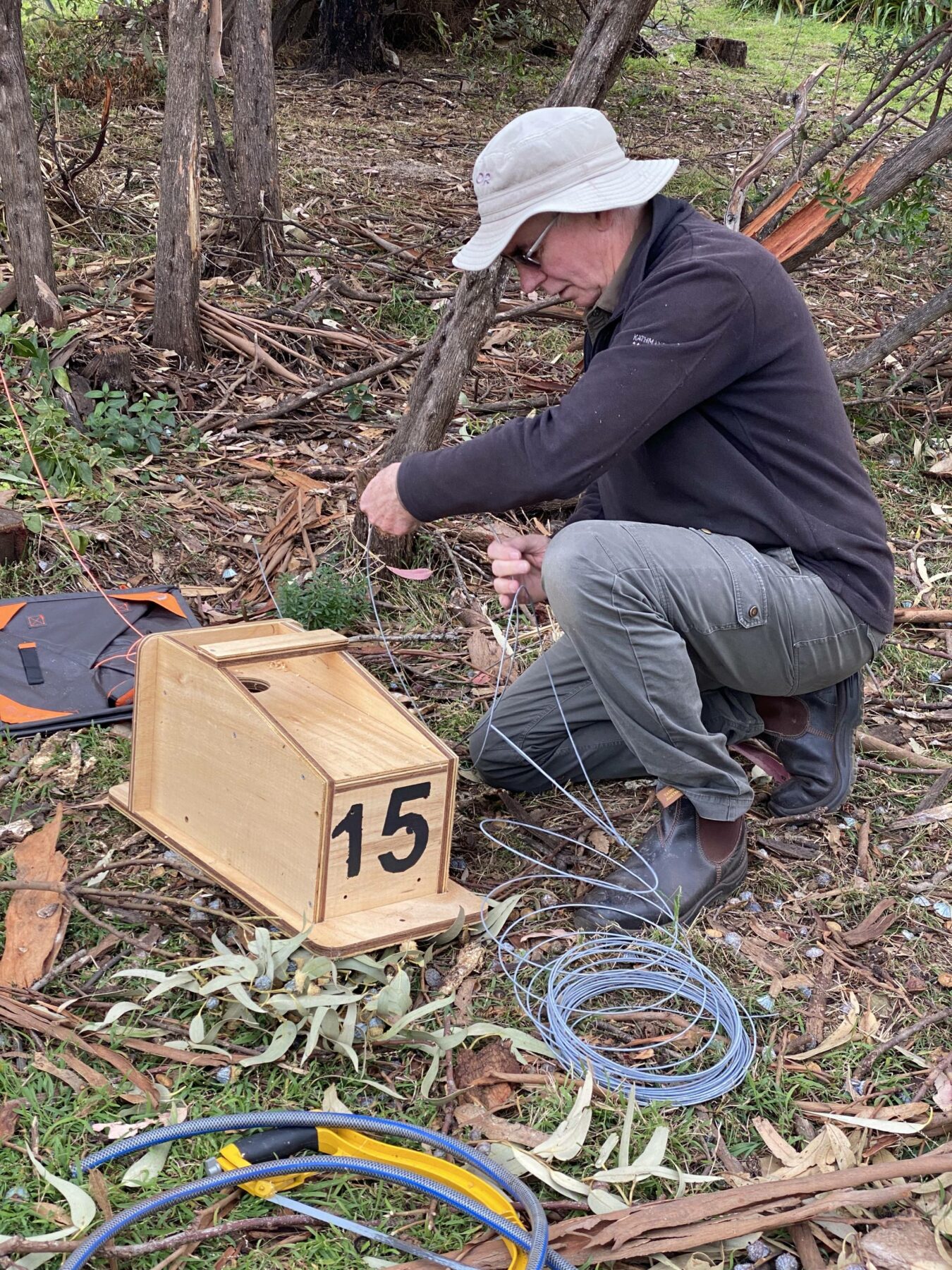
One of 3 new nesting boxes install around the Clarence Council area
Why ongoing monitoring is essential
Monitoring habitat augmentation techniques, like chainsaw-carved hollows for ground-dwelling vertebrates, is crucial for assessing conservation success. This involves tracking habitat use to ensure it suits the target species, assessing habitat conditions for maintenance needs, and observing for unintended attraction of non-target species, which can harm biodiversity and ecosystems.
Moreover, population surveys of target species are vital to gauge whether these habitats contribute to growth or stabilisation. Techniques such as capture-mark-recapture, radio-tagging, and camera traps can be employed. Regular annual monitoring is essential to ensure effective habitat use, minimise non-target species presence, and promptly address issues, ensuring conservation efforts remain effective.
Our software
To aid our monitoring efforts, Tasmanian Tree Care employs data collection methodology and mapping software.
The data collected includes information on the number of individuals, as well as the species and all the important characteristics and dimensions of the hollow. Additionally, we monitor the physical condition of the habitats, such as the degree of deterioration and water ingress, to determine if and how often they need to be repaired or replaced.
Be a part of the program
At Tasmanian Tree Care, we are dedicated to a holistic approach to tree care and the conservation of native fauna. Our habitat monitoring program offers the installation or creation of habitat hollows, and the ongoing monitoring of their success.
By joining the program, your hollows will link with a greater state-wide network. The data collected from this network will help inform population surveys, which will in turn act to protect the habitat of vulnerable species in the face of growing urban development. You will also have unlimited access to this data!
To express your interest in the program, or to request further information, please complete the form below or contact us on 0428 997 068.
Join our habitat monitoring program
At Tasmanian Tree Care, we are dedicated to a holistic approach to tree care and the conservation of native fauna. Our habitat monitoring program offers the installation or creation of habitat hollows, and the ongoing monitoring of their success.
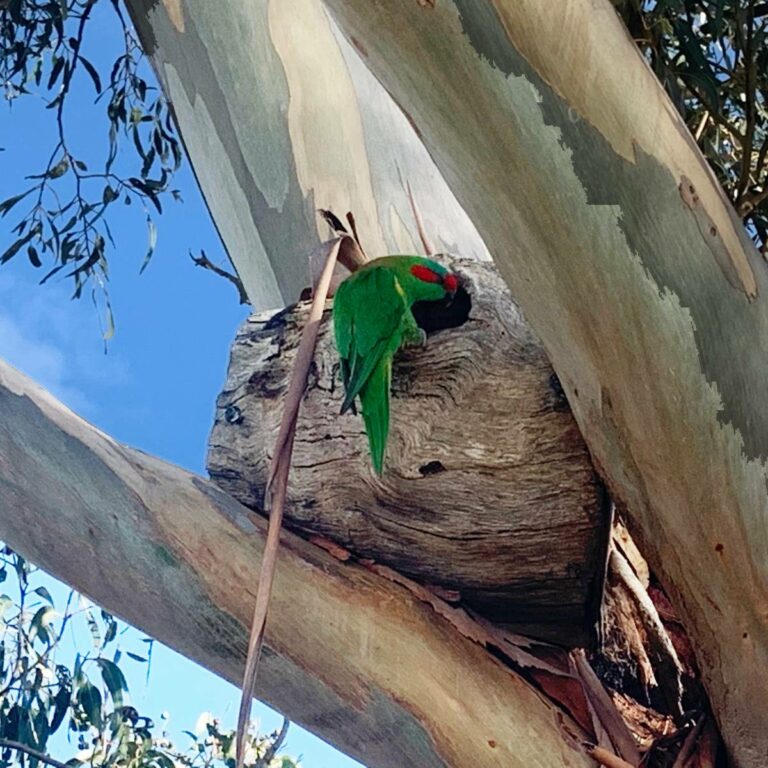

TACPLACI members Marion Ramsay and Maureen Newman
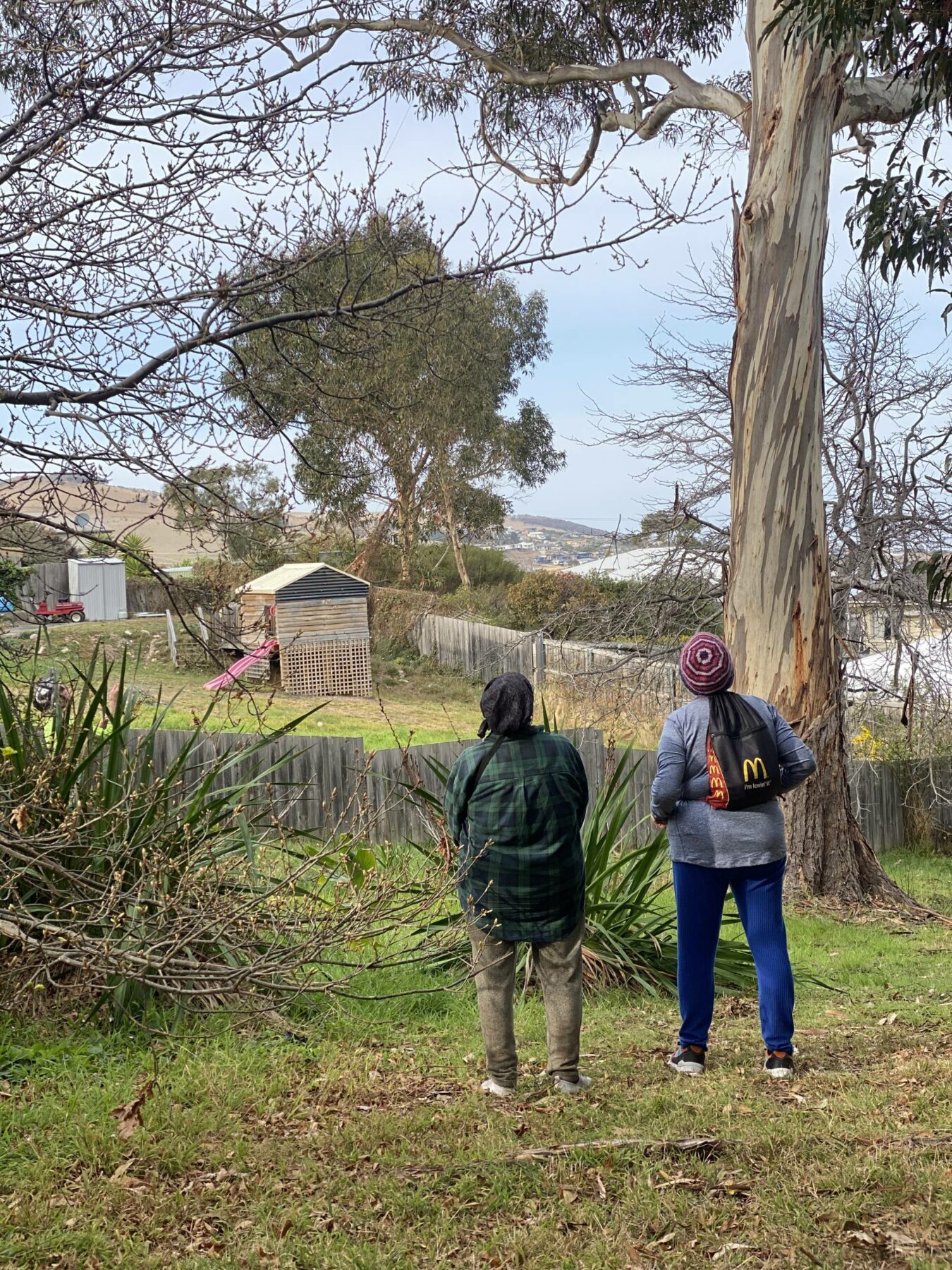
Watching the masters at work!
